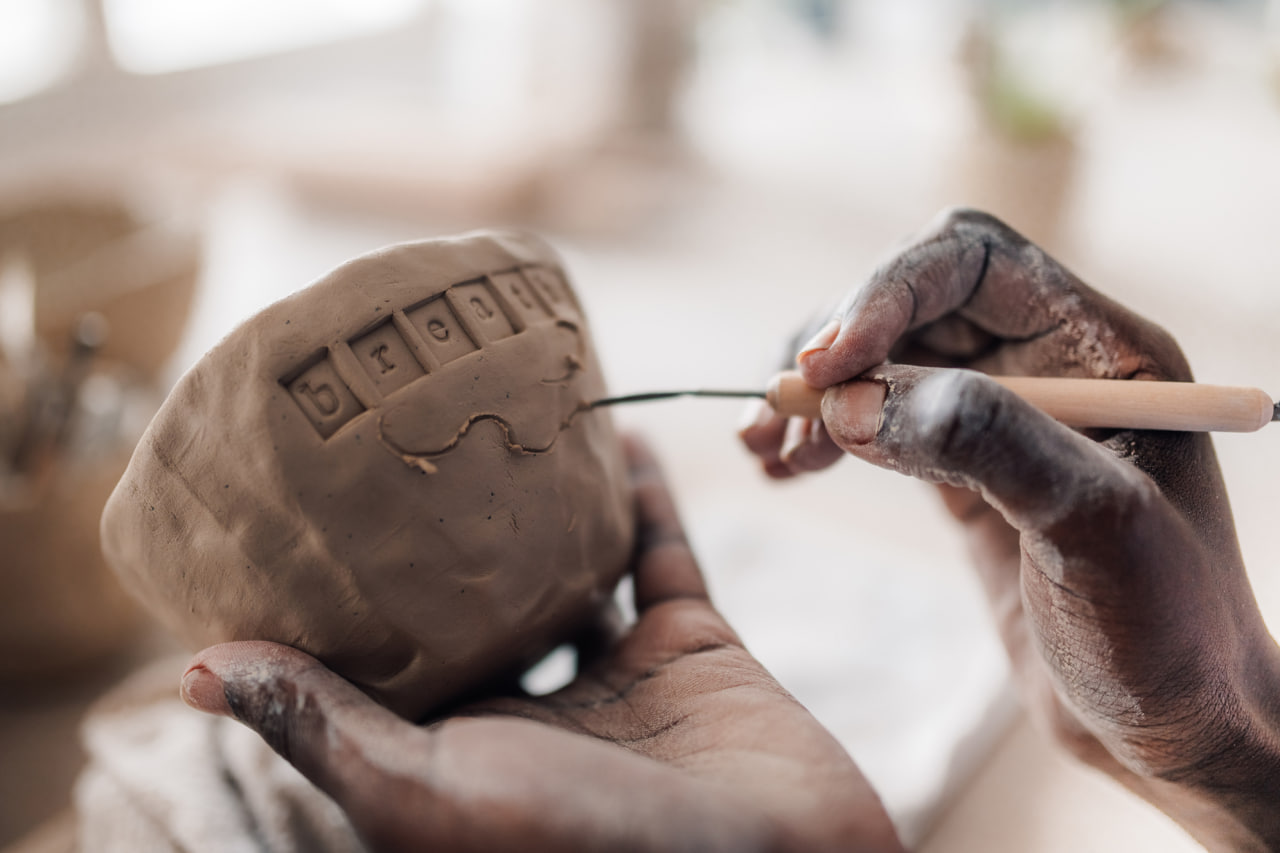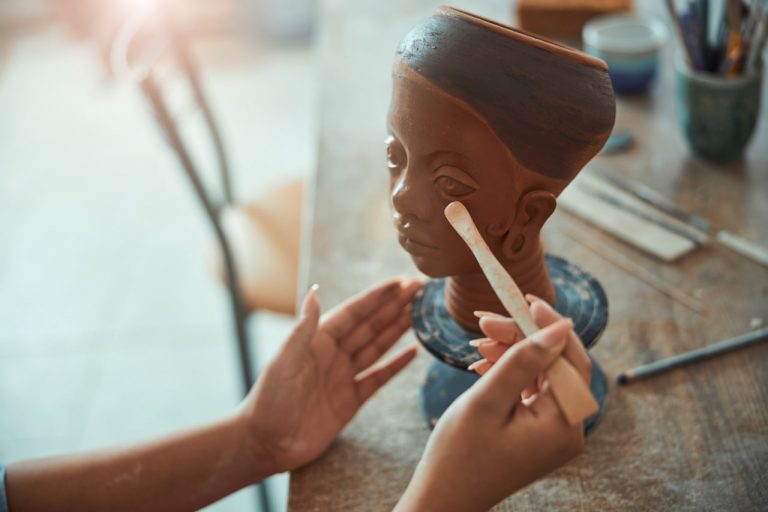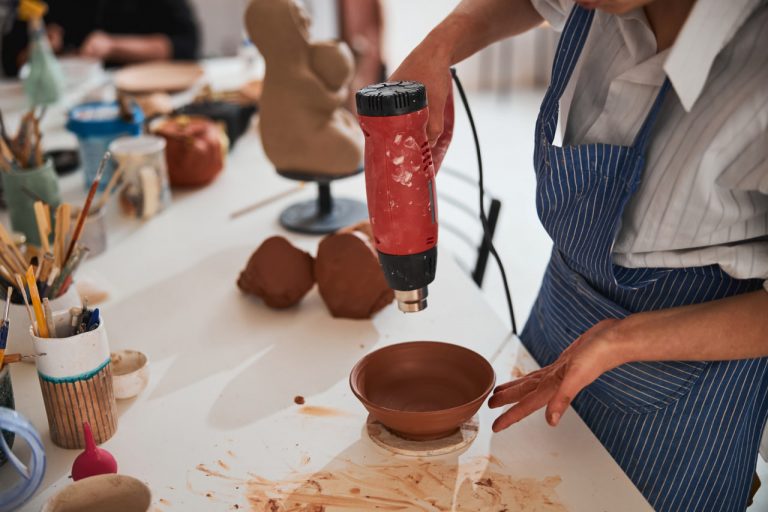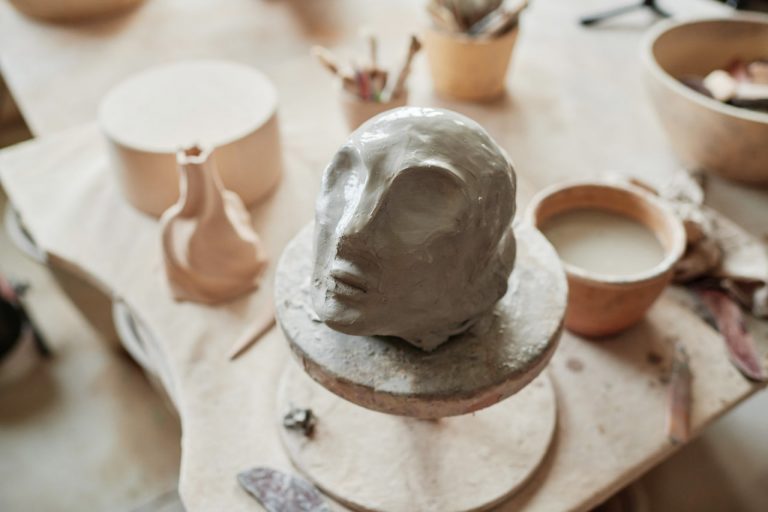Clay sculpting is a rewarding and creative process, but beginners often encounter challenges that can affect the final result. Mistakes such as cracks, uneven shapes, and structural problems are common, but they can be prevented or corrected with the right techniques. Understanding these issues and learning how to fix them ensures smoother progress and more satisfying results for sculptors of all levels.
Overworking the Clay
One frequent mistake is overhandling the clay, which can lead to dryness, cracks, and difficulty in shaping. Continuously kneading or reshaping clay can cause it to lose moisture and become brittle.
How to Fix It:
- Keep clay covered with a damp cloth when not in use to maintain moisture.
- Work in small sections, gradually shaping your figurine rather than manipulating the entire piece repeatedly.
- Use a clay softener or water sparingly to restore pliability if the clay becomes stiff.
Improper Clay Conditioning
Beginners often skip conditioning clay, resulting in air pockets, uneven texture, and weaker structures. Conditioning is crucial to remove air bubbles and achieve smooth, workable clay.
How to Fix It:
- Knead the clay thoroughly before sculpting to ensure even consistency.
- Roll, fold, and press the clay multiple times to eliminate trapped air.
- For large projects, condition clay in sections and blend them carefully to maintain uniformity.
Cracks During Drying
Cracks often appear when clay dries too quickly or unevenly. Rapid moisture loss can cause the surface to shrink faster than the inner clay, leading to visible cracks.
How to Fix It:
- Dry pieces slowly at room temperature, covering loosely with plastic if necessary.
- Score and slip cracks with fresh clay to patch and smooth them before fully drying.
- Avoid placing clay near direct sunlight or heaters during the drying process.
Uneven Proportions
Beginners frequently struggle with proportions, resulting in lopsided or unrealistic figurines. This can affect the overall balance and aesthetic of the sculpture.
How to Fix It:
- Use reference images or sketches to guide proportions.
- Measure or mark guidelines on the clay to ensure symmetry.
- Step back frequently to evaluate the piece from different angles.
Weak Structures
Thin or unsupported sections, such as limbs or extended features, are prone to breaking during sculpting or drying. Improper internal support can compromise stability.
How to Fix It:
- Use armatures, wires, or internal supports for fragile or extended parts.
- Gradually build layers and add details after establishing a strong base.
- Reinforce joints with extra clay or blending techniques to increase strength.
Poor Surface Finishing
Rough, uneven, or scratched surfaces can detract from the overall appearance of a figurine. Beginners often neglect smoothing or texturing properly.
How to Fix It:
- Use sculpting tools, brushes, or sponges to smooth the surface before drying.
- Apply water or slip to fill minor imperfections and achieve a polished finish.
- Sand lightly after drying if the clay type allows, for a refined final look.
Inconsistent Baking or Firing
For polymer or ceramic clays, incorrect baking or firing can result in cracks, discoloration, or incomplete hardening.
How to Fix It:
- Follow the manufacturer’s instructions for temperature and time carefully.
- Preheat the oven or kiln to the correct temperature before placing clay inside.
- Allow gradual cooling to prevent thermal shock and cracking.




